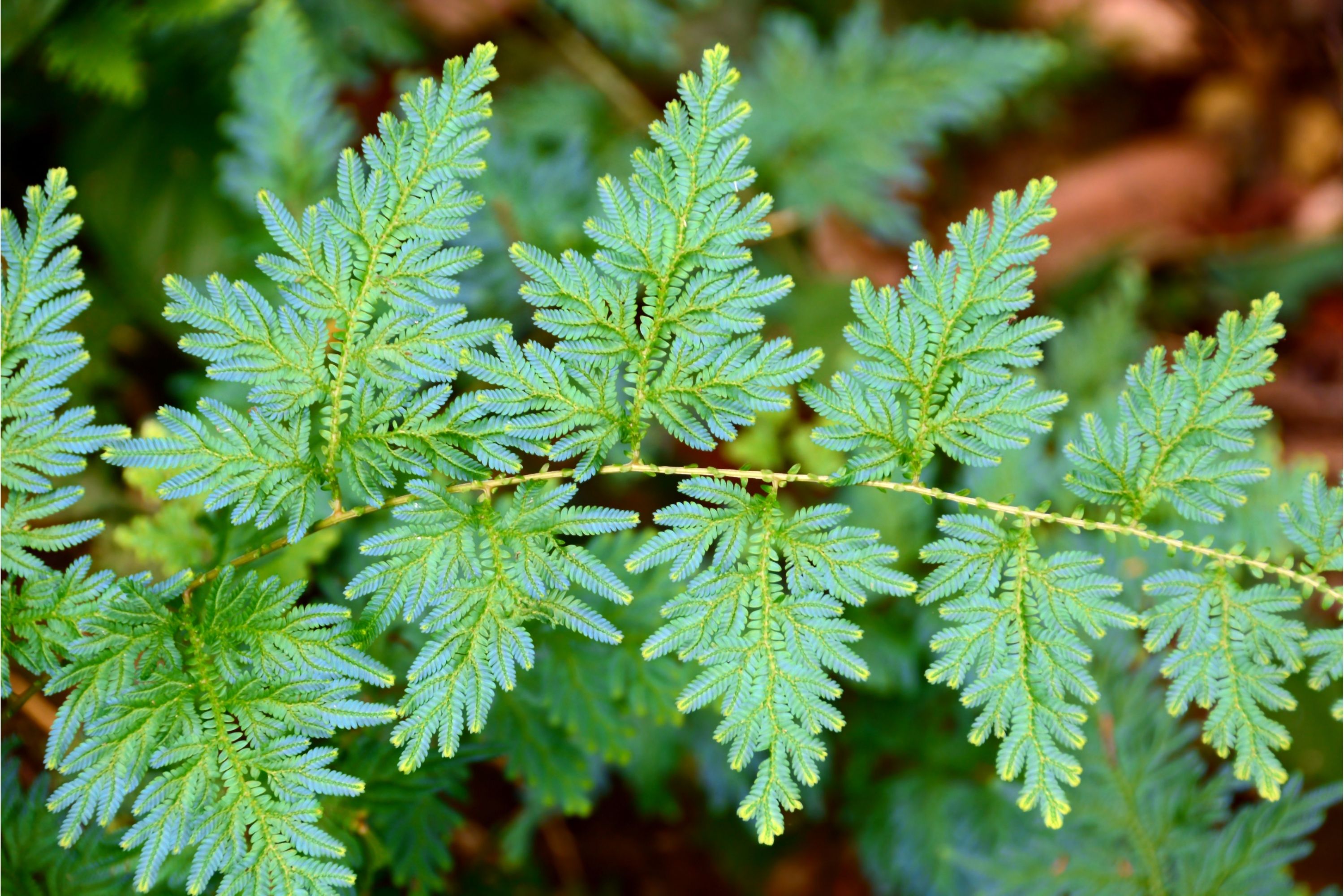Spikemoss
(Selaginella umbrosa)

Description
Selaginella umbrosa is a species of plant in the Selaginellaceae family. Umbrosa is native to South America, ranging from Yucatán to Colombia and Venezuela. It can be found in Barbados and Tobago, where it is most likely not native. It has also been introduced to the Island of Hawaii, where it was first seen cultivated in 1994, and then wild in 2000. The plant prefers to grow in shaded areas The plant's stem is typically 8–25 centimeters long before branching, usually red in color. The branched portion is 10–25 centimeters, usually at a 45 to 90 degree angle from the stem. In the traditional medicine of Belize, the plant is used to treat bladder infections, skin fungus, and mental illness. Selaginella is the sole genus of vascular plants in the family Selaginellaceae, the spikemosses or lesser clubmosses. Selaginella species are creeping or ascendant plants with simple, scale-like leaves (microphylls) on branching stems from which roots also arise. The stems are aerial, horizontally creeping on the substratum (as in Selaginella kraussiana), sub-erect (Selaginella trachyphylla) or erect (as in Selaginella erythropus). The vascular steles are polystelic protosteles. Stem section shows the presence of more than two protosteles. Each stele is made up of diarch (having two strands of xylem) and exarch (growing outward in) xylems. The steles are connected with the cortex by means of many tube-like structures called trabeculae, which are modified endodermal cells with casparian strips on their lateral walls. The stems contain no pith. In Selaginella, each microphyll and sporophyll has a small scale-like outgrowth called a ligule at the base of the upper surface. The plants are heterosporous with spores of two different size classes, known as megaspores and microspores. Unusual for the lycopods, which nearly always have microphylls with a single unbranched vein, the microphylls of a few Selaginella species contain a branched vascular trace. Under dry conditions, some species of Selaginella can survive dehydration. In this state, they may roll up into brown balls and be uprooted, but can rehydrate under moist conditions, become green again and resume growth. This phenomenon is known as poikilohydry, and poikilohydric plants such as Selaginella bryopteris are sometimes referred to as resurrection plants.
Taxonomic tree:







